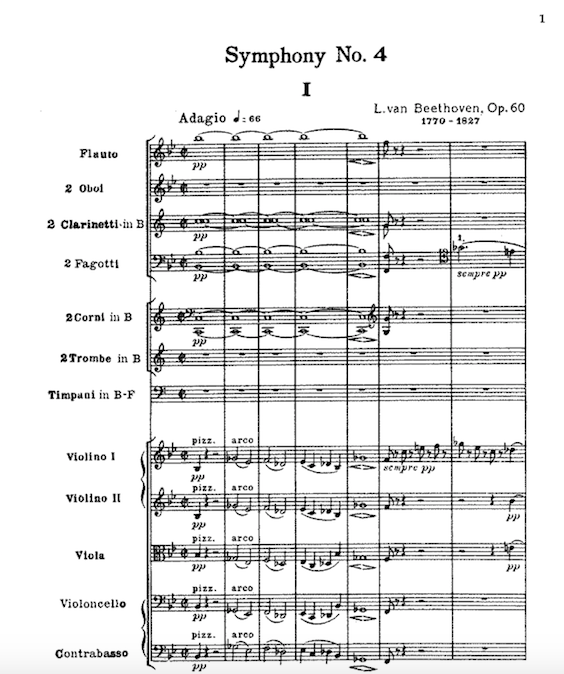
My office this morning is the one and only Chick-fil-A, a restaurant chain run so well, so politely, serving such delicious food that it ought to be a crime to not eat here.
Today starts a whole new cycle of Beethoven’s symphonies for me, which means I’m back to the “A” in my conductor roster: Italian Maestro Claudio Abbado (1933-2014). The orchestra is the Berlinker Philharmoniker. The music today is Beethoven’s Symphony No. 4 in B flat Major.
 From its entry on Wikipedia,
From its entry on Wikipedia,
The Symphony No. 4 in B-flat major, Op. 60, is a symphony in four movements composed by Ludwig van Beethoven in the summer of 1806. It was premièred in March 1807 at a private concert at the home of Joseph Franz von Lobkowitz.
In general the symphony is sunny and cheerful, with light instrumentation that recalls the symphonies of Joseph Haydn, with whom Beethoven had studied a decade before. The Fourth Symphony contrasts with Beethoven’s composition style in the previous Third Symphony, and is often overshadowed by both its predecessor and succeeding work, the celebrated Fifth Symphony which Beethoven had set aside to complete the Fourth. Despite being written in a style more akin to that of Beethoven’s first two symphonies, the Fourth contains many aspects that show his growing strength as a composer, most notably the B♭ minor Adagio introduction to the first movement, which Leonard Bernstein described as a “mysterious introduction which hovers around minor modes, tip-toeing its tenuous weight through ambiguous unrelated keys and so reluctant to settle down into its final B♭ major.”

I often like to put things in context. In this case, Beethoven’s Fourth was composed just 30 years after America was founded as an independent country (1776).
So while America was just learning to walk, and our President was Thomas Jefferson, Ludwig Beethoven was creating works of art that are nearly as old as America herself – and still played around the world to this day.
 Beethoven wrote his symphonies in four parts (except for the Sixth, which is in five). The time breakdown of this particular one (Symphony No. 4 in B flat Major), from this particular conductor (Abbado, at age 68) and this particular orchestra (Berliner Philharmoniker), at this particular time in history (February, 2001) on this particular record label (Deutsche Grammophon) is as follows:
Beethoven wrote his symphonies in four parts (except for the Sixth, which is in five). The time breakdown of this particular one (Symphony No. 4 in B flat Major), from this particular conductor (Abbado, at age 68) and this particular orchestra (Berliner Philharmoniker), at this particular time in history (February, 2001) on this particular record label (Deutsche Grammophon) is as follows:
I. Adagio – Allegro vivace…………………………………………………………………11:34
II. Adagio……………………………………………………………………………………………9:48
III. Allegro molto e vivace – Trio. Un poco meno allegro………………..5:54
IV. Allegro ma non troppo………………………………………………………………..6:39
Total running time: 33:15
My Rating:
Recording quality: 4 (slight tape hiss, ambient noises, a bit of top end missing)
Overall musicianship: 5
CD liner notes: 4 (liner notes consist of all necessary technical detail, plus an essay about Abbado’s approach to conducting Beethoven, translated into E/G/F/I, but virtually nothing about Beethoven himself or his symphonies)
How does this make me feel: 5
I have to admit I was drawn in by this symphony from the first notes of the somewhat mysterious, slow-build first movement.
In toto, this is a brisk, lively, fun, engaging symphony that transports me to another place. A happy place.
It’s the perfect length, too – just over 33 minutes. I can listen to this 2-3 times through while I’m researching and writing other aspects of the recording.
It’s entirely possible other conductors and orchestras will provide me with an even greater experience than Claudio Abbado and the Berliner Philharmoniker. But right now, in this place, on this morning, I have to rate Abbado’s leadership and this recording with a coveted “Huzzah!”
I recommend this performance.
